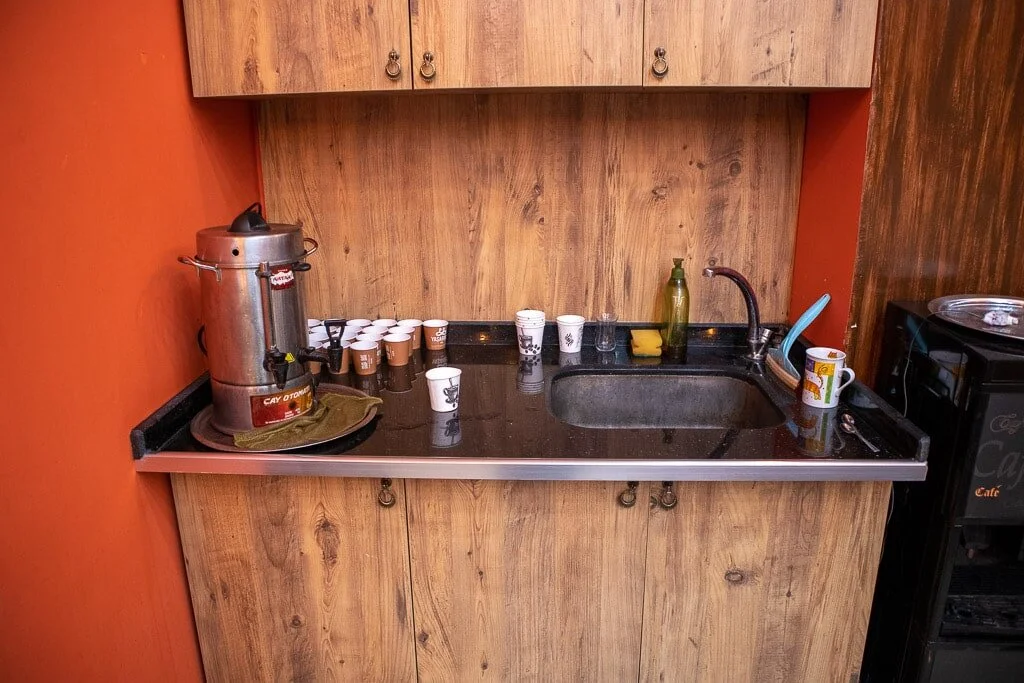Kuruyemiş: The Snack Food of Turkey
“Well, it is dried food,” a friend replied with the literal translation when I asked her “what is kuruyemiş (koo-roo-yea-mish)?” “However,” she added, “what comes to mind is nuts, seeds and grains--not so much dried fruit, coffee, spices and sweets although they are all sold in the same kuruyemiş stores.”
Every street corner is sure to have at least one kuruyemiş store. They can have such an incredible variety of products that one does not know where to begin or even what the bare necessities are.
The conversation changed when I asked my friend, “what is kuruyemiş to you?”
“It is being with my family in the winter when we sit around and snack together” she said as she confessed to always picking out her favorite nuts from the mix. “It is spending time with my friends, eating sunflowers seeds and drinking Coke (the preferred beverage for such an occasion)” she added. The love of kuruyemiş in Turkey is not only due to how delicious or relatively healthy of a snack it is, but is also amplified by it being a food that can be grazed on over many glasses of tea and hours of conversation.
Turkey is known as a worldwide exporter of kuruyemiş. Many products are found throughout the country, though many regions in Turkey are known for a specific ingredient that they are responsible for producing. The Black Sea region is known for producing hazelnuts, the Aegean for chestnuts, Central Anatolia for sunflower seeds, and the southeast for pistachios. When my friend hears “peanut” she thinks Osmaniye, “hazelnut” Ordu, and “pistachio” Gaziantep. Many provinces vie to be known for producing the most of a particular good, such as Çorum for roasted chickpeas and Bursa for chestnuts.
In addition, many cities are known for how they use their regional products. Walnuts, which are produced throughout the country, are jellied in Bitlis, made into a sweet dessert in Bursa, and rolled up in a fruit wrap in Elazığ. Similarly, almonds, popular throughout Turkey, when coated with sugar are known as Mardin Almonds.
In spring in Mardin the trees are alive with brilliant pink flowers that line the horizon. From these flowers come almonds, which are shelled and eaten raw, roasted and sprinkled with salt, or coated with a variety of flavors. The traditional Mardin Almond is roasted and has a slightly sweet blue coating.
While walking up and down the main street in the old castle city complex these delicious treats are offered along with a local “Dibek” coffee to lure visitors into one of the many kuruyemiş stores.
Coffee ready to be sampled
On a recent trip to Mardin, we tasted some of the best almonds at Yaşarbey. Yaşarbey is a kuruyemiş store with a wide variety of products including traditional Mardin Almonds as well as almonds coated with cinnamon, chocolate, white chocolate, honey, and even coffee.
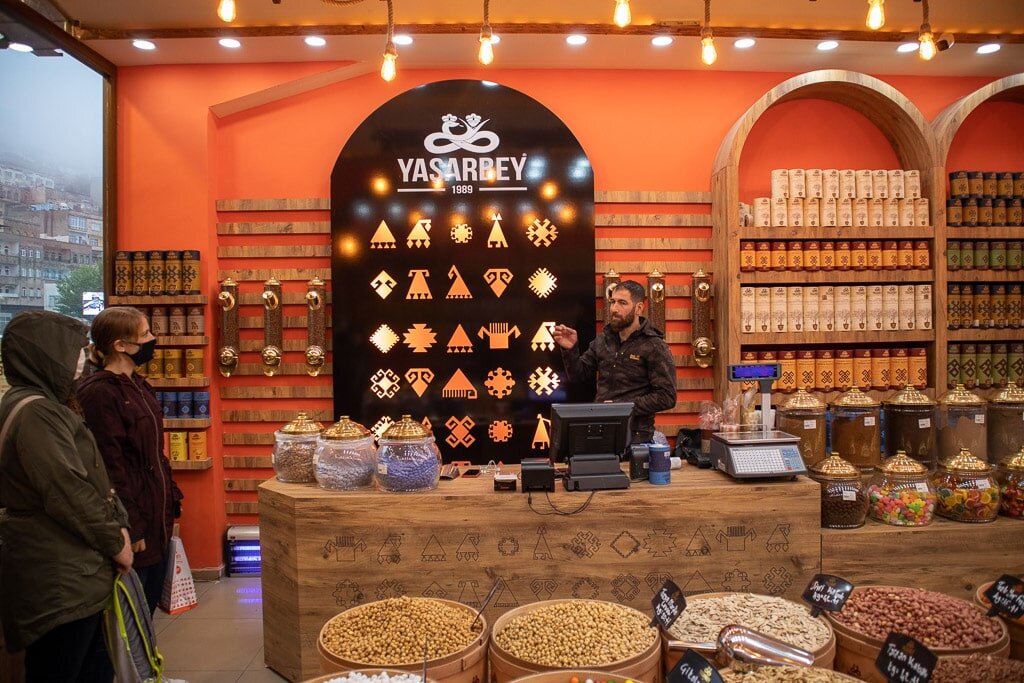
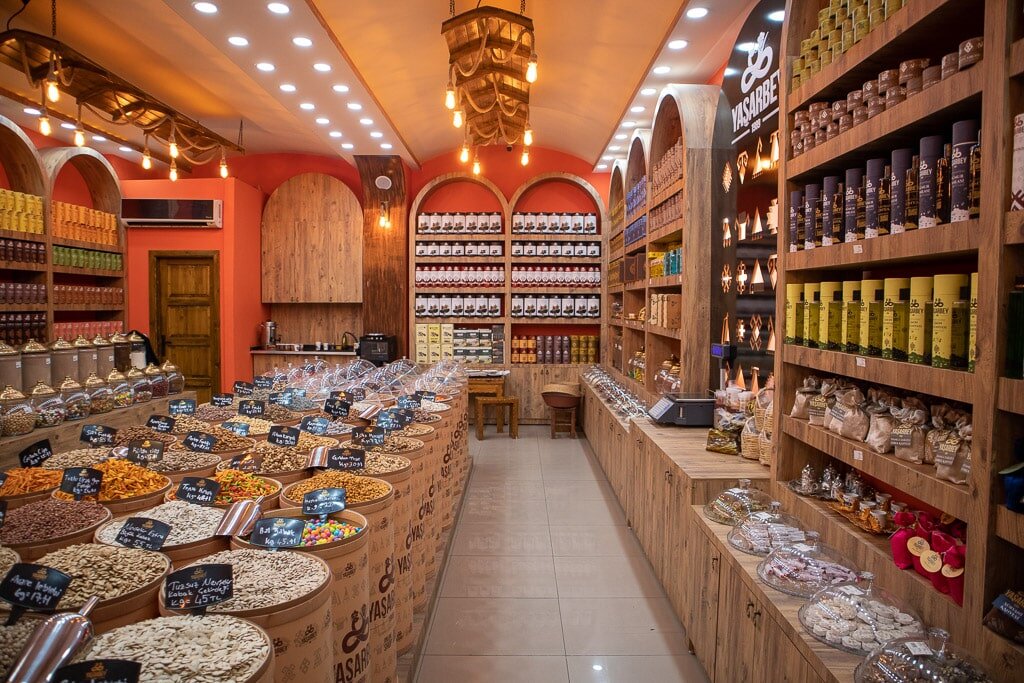

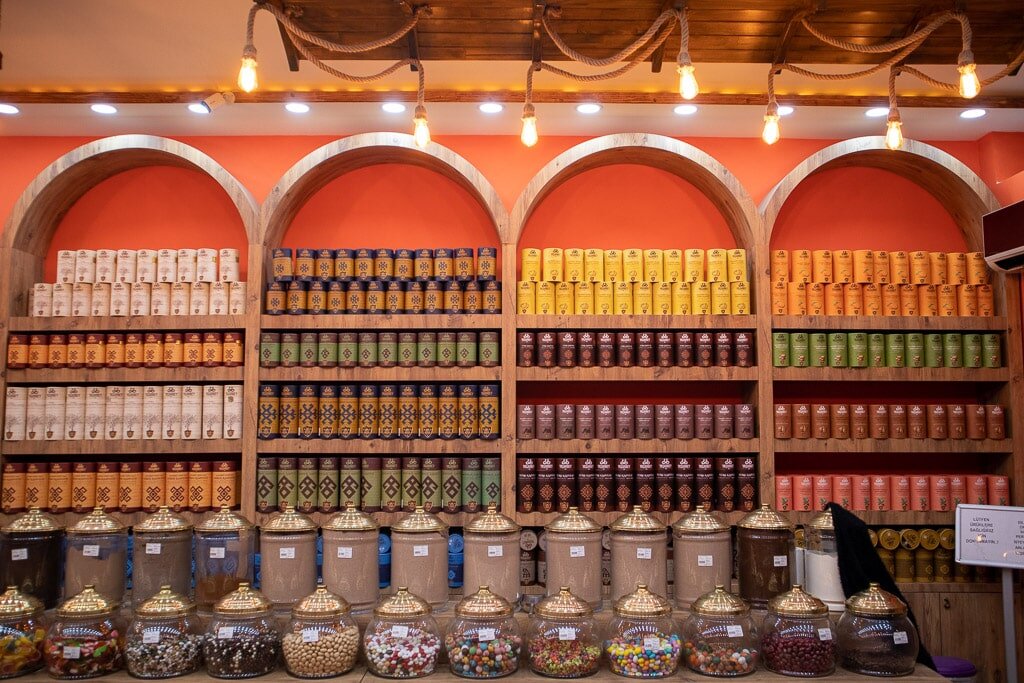
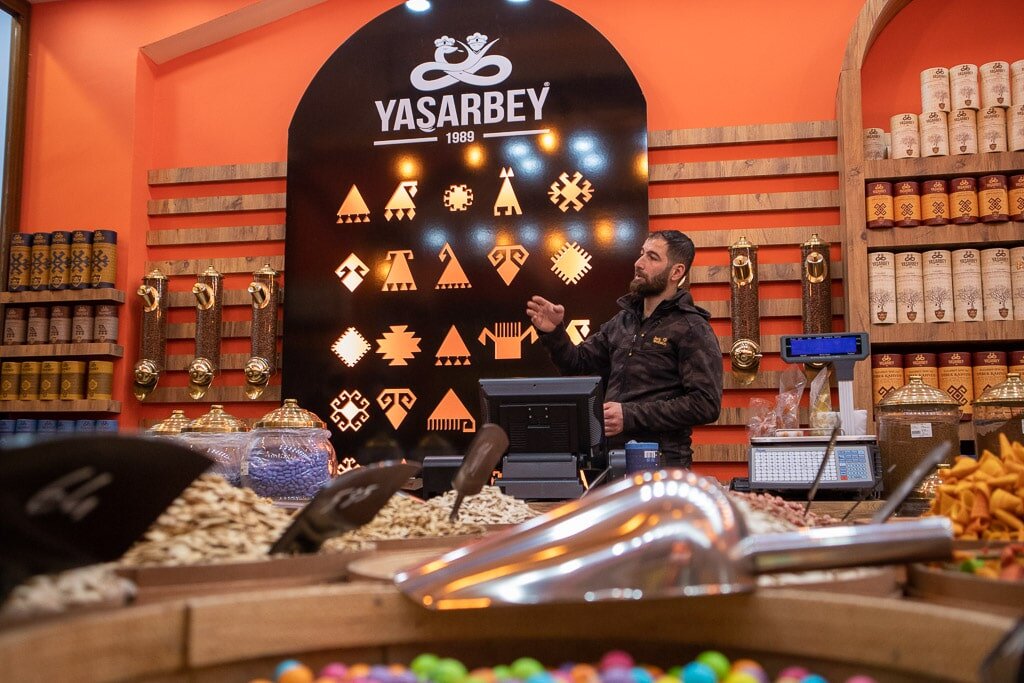
While sampling almonds and savoring our coffee we asked about some of the beautiful symbols throughout the shop. We were told that the symbols are a part of their Kurdish history and represent ancestral stories.
We left with armfuls of kuruyemiş to enjoy with our friends and neighbors, as kuruyemiş should be eaten.
To our friends in the West, keep looking East!
Rebekah Harper
Rebekah loves claiming Birmingham, Alabama as her hometown, though she has learned that home can be anywhere. With half of her life spent in North Africa and Europe and the other half on the West Coast (USA), it can be said that she has grown adept at fitting in everywhere but belonging to nowhere. However, over the past couple of years Turkey has captivated her attention. She loves the adventure of exploring new places but even more so the people and stories she has come to cherish along the way.










